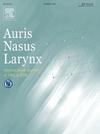上皮细胞动力学:嗜酸性慢性鼻窦炎2型炎症的关键驱动因素
IF 1.5
4区 医学
Q2 OTORHINOLARYNGOLOGY
引用次数: 0
摘要
鼻黏膜上皮细胞不仅作为物理屏障,而且通过先天免疫和获得性免疫作为免疫反应的动态调节剂。这些细胞在检测环境刺激(如病原体、过敏原和污染物)以及启动炎症级联反应(形成整体免疫反应)方面发挥关键作用。上皮细胞通过释放细胞因子,如白细胞介素(IL)-25和IL-33,以及胸腺基质淋巴生成素,与免疫细胞相互作用并促进2型炎症。嗜酸性粒细胞慢性鼻窦炎(ECRS)的发病机制是异质性的,它是由2型炎症驱动的。虽然免疫细胞传统上被认为是疾病发病机制的核心,但新出现的证据表明上皮细胞的关键作用。此外,靶向IL-4/IL-13信号通路的新型生物制剂已显示出减轻上皮功能障碍和炎症的潜力。在鼻窦积聚的嗜酸性粘蛋白损害粘膜纤毛功能,特别是嗜酸性细胞胞外陷阱细胞死亡(EETosis)刺激上皮细胞并放大嗜酸性炎症。嗜酸性粘蛋白的形成已被证明可以通过etosis显著增加黏度,而靶向IL-5信号通路的新型生物制剂有望有效缓解这一过程。为了开发有针对性的干预措施,重要的是探索上皮亚群,如基底细胞和簇状细胞,在维持组织修复和慢性炎症之间的平衡中的作用。单细胞转录组学和空间转录组学技术为ECRS中上皮细胞源性炎症的复杂性提供了重要的见解。CRS合并鼻息肉和ECRS的发病机制在患者群体中的异质性使通用治疗的发展复杂化,强调了分层医学方法的必要性。潜在的未来治疗策略包括通过破坏上皮细胞和免疫细胞之间的异常串扰来恢复上皮完整性和免疫平衡,特别是在对当前治疗无反应的患者中。本文章由计算机程序翻译,如有差异,请以英文原文为准。
Epithelial cell dynamics: Key drivers of type 2 inflammation in eosinophilic chronic rhinosinusitis
Sinonasal mucosal epithelial cells act not only as a physical barrier, but also as dynamic regulators of immune responses through innate and acquired immunity. These cells play a key role in detecting environmental stimuli, such as pathogens, allergens, and pollutants, and in initiating the inflammatory cascade that shapes the overall immune response. By releasing cytokines, such as interleukin (IL)-25 and IL-33, and thymic stromal lymphopoietin, epithelial cells interact with immune cells and promote type 2 inflammation.
The pathogenesis of eosinophilic chronic rhinosinusitis (ECRS), which is driven by type 2 inflammation, is heterogeneous. While immune cells have traditionally been considered to be central to the disease pathogenesis, emerging evidence has indicated the critical role of epithelial cells. Furthermore, novel biologics targeting the IL-4/IL-13 signaling pathway have shown potential in alleviating epithelial dysfunction and inflammation. Eosinophilic mucins that accumulate in the sinuses impair mucociliary function, and especially eosinophil extracellular trap cell death (EETosis) stimulate epithelial cells and amplify eosinophilic inflammation. Eosinophilic mucin formation has been shown to significantly increase viscosity through EETosis, and novel biologics targeting the IL-5 signaling pathway hold promise for effectively mitigating this process.
To develop targeted interventions, it is important to explore the role of epithelial subpopulations, such as basal cells and tuft cells, in maintaining the balance between tissue repair and chronic inflammation. Single-cell transcriptomics and spatial transcriptomics technologies have provided significant insights into the complexity of epithelial cell-derived inflammation in ECRS. The heterogeneity of the pathogenesis of CRS with nasal polyps and ECRS across patient populations complicates the development of universal therapies, underscoring the need for stratified medicine approaches. Potential future therapeutic strategies include the restoration of epithelial integrity and immune balance by disrupting aberrant crosstalk between epithelial and immune cells, particularly in patients unresponsive to current treatments.
求助全文
通过发布文献求助,成功后即可免费获取论文全文。
去求助
来源期刊

Auris Nasus Larynx
医学-耳鼻喉科学
CiteScore
3.40
自引率
5.90%
发文量
169
审稿时长
30 days
期刊介绍:
The international journal Auris Nasus Larynx provides the opportunity for rapid, carefully reviewed publications concerning the fundamental and clinical aspects of otorhinolaryngology and related fields. This includes otology, neurotology, bronchoesophagology, laryngology, rhinology, allergology, head and neck medicine and oncologic surgery, maxillofacial and plastic surgery, audiology, speech science.
Original papers, short communications and original case reports can be submitted. Reviews on recent developments are invited regularly and Letters to the Editor commenting on papers or any aspect of Auris Nasus Larynx are welcomed.
Founded in 1973 and previously published by the Society for Promotion of International Otorhinolaryngology, the journal is now the official English-language journal of the Oto-Rhino-Laryngological Society of Japan, Inc. The aim of its new international Editorial Board is to make Auris Nasus Larynx an international forum for high quality research and clinical sciences.
 求助内容:
求助内容: 应助结果提醒方式:
应助结果提醒方式:


